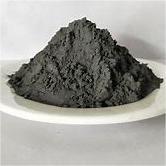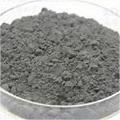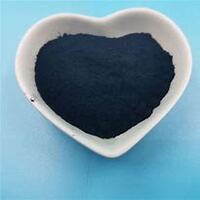Overview of Aggregated And Sintered Molybdenum Powder/Mo powder
Molybdenum (Mo) is a chemical element with the atomic number 42 and is represented by the symbol Mo on the periodic table. It is a transition metal located in group 6 and period 5. Molybdenum is known for its high melting point, excellent strength, and thermal stability, making it a crucial component in various industrial applications.
Feature of Aggregated And Sintered Molybdenum Powder/Mo powder
-
High Melting Point: Molybdenum has one of the highest melting points among all pure elements, at 2,623°C (4,753°F). This property makes it ideal for high-temperature applications.
-
Strength and Toughness: Even at high temperatures, molybdenum maintains its strength and hardness, which is essential for use in extreme environments.
-
Corrosion Resistance: Molybdenum exhibits good corrosion resistance to many acids and alkalis, although it can be attacked by oxidizing acids like nitric acid.
-
Thermal Conductivity: It is an excellent conductor of heat, making it suitable for applications where efficient heat transfer is required.
-
Alloying Agent: Molybdenum is widely used as an alloying agent, particularly with steel, to enhance hardness, toughness, and resistance to wear and corrosion. Stainless steels often contain molybdenum for these properties.
-
Electrical Applications: Due to its low resistivity and high-temperature stability, molybdenum is used in electrical contacts and heating elements.
-
Lubricity: Molybdenum disulfide (MoS₂) is a common dry lubricant, providing low friction surfaces in high-pressure, high-temperature conditions.

(Aggregated And Sintered Molybdenum Powder/Mo powder)
Parameters of Aggregated And Sintered Molybdenum Powder/Mo powder
Aggregation and sintering of metals such as molybdenum powder, molybdenum powder/melted metal powder, etc. requires specialized techniques to achieve the desired performance and consistency.
Here are some general parameters that should be considered when aggregating and sintering:
1. Matter content: The matter content is essential for achieving high melting point and other important properties. Lower matter content can result in lighter weight, but it may also decrease durability and conductivity.
2. Temperature: Temperatures are crucial for achieving the correct temperature range for aggregation and sintering. In general, high temperatures lead to better surface roughness and improved cracking rate.
3. Heat applied: Depending on the type of material being formed, heat applied is necessary to achieve proper erosion, solidification, and bonding.
4. Machine conditions: The type of equipment used will affect the final product’s properties. High-speed, high-pressure grinding may improve the compactness and yield of the final product, while undercompensated grinding may result in inconsistencies in properties.
5. года materials: Different materials have different requirements for aggregation and sintering. Materials with higher melting points and lower moisture content may require higher temperature settings and better processing times.
6. Test conditions: Testing conditions, including the strength of the stress, toughness, and mechanical properties of the final product, can help determine its suitability for use in various applications.
By considering these parameters and optimizing the process, users can create high-quality and sustainable aggregates and sinterings of their metals.

(Aggregated And Sintered Molybdenum Powder/Mo powder)
Company Profile
Metal in China is a trusted global chemical material supplier & manufacturer with over 12-year-experience in providing super high-quality copper and relatives products.
The company has a professional technical department and Quality Supervision Department, a well-equipped laboratory, and equipped with advanced testing equipment and after-sales customer service center.
If you are looking for high-quality metal powder and relative products, please feel free to contact us or click on the needed products to send an inquiry.
Payment Methods
L/C, T/T, Western Union, Paypal, Credit Card etc.
Shipment
It could be shipped by sea, by air, or by reveal ASAP as soon as repayment receipt.
FAQ
-
What are the primary uses of Aggregated And Sintered Molybdenum Powder/Mo powder?
Aggregated And Sintered Molybdenum Powder/Mo powder is primarily used in the production of steel alloys, accounting for over 80% of its consumption. It’s also used in chemicals, lubricants, electronics, and specialized applications like lighting and nuclear energy.
-
Is molybdenum found naturally?
Yes, molybdenum is found naturally in the Earth’s crust, often in minerals like molybdenite (MoS₂) and powellite (CaMoO₄). It is mined as a byproduct of copper mining.
-
How does Aggregated And Sintered Molybdenum Powder/Mo powder affect human health?
In small amounts, molybdenum is an essential trace element for humans, playing a role in enzyme functions. However, excessive intake can lead to toxicity, though this is rare under normal dietary conditions.
-
Is molybdenum magnetic?
Molybdenum itself is not magnetic. It is classified as a diamagnetic material, meaning it repels magnetic fields slightly rather than being attracted to them.
-
What industries rely heavily on molybdenum?
The steel industry is the largest consumer of molybdenum, followed by the chemical, oil and gas, automotive, aerospace, and construction industries.
-
Is recycling molybdenum possible?
Yes, molybdenum can be recycled from scrap materials. Given its valuable properties and relative scarcity, recycling helps conserve resources and is economically viable.

(Aggregated And Sintered Molybdenum Powder/Mo powder)




